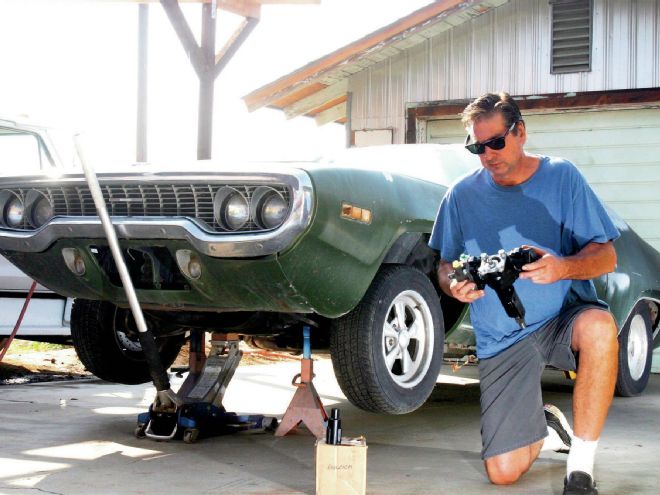
Mopar power steering is a frequent subject of derision. This abuse goes back decades, and even old magazine road tests would often cite a lack of road feel or over-assist as the chief complaint. In this day, the complaints still keep coming, and we hear the same criticism about the feel, along with claims that it is too slow, sloppy, and antiquated. Opinions will vary here, but at a 15.7:1 ratio and about 3.5 turns lock to lock, the factory steering really isn't particularly slow. Personally, I've never found the level of assist objectionable—in fact, for the most part I like the original Mopar power steering feel. Sure, the steering can get sloppy after 40-plus years, but generally the sloppiness in an old Mopar steering system is more likely the result of the linkages and suspension than the box itself, especially if the sector shaft is properly adjusted. Actually, the factory box could be said to be a pretty bulletproof unit.
You might figure I'm a fan of Mopar power steering, and you'd be correct. So, when a new replacement power steering box from Borgeson hit the market for classic Mopars, why would I consider a change? For openers, the sheer bulk and weight of the stock box is enough to make me want it gone. In some applications, bulk alone is motivation, as clearance between the stock box and headers can get tight. Reduced dimensions are certainly welcome in these cases, and sometimes size can be the difference between being able to run a combination with power steering or not. Weight is where the original Mopar power steering boxes look antiquated by today's standards. There really isn't much to like about nearly 40 pounds of pig iron at the other end of the steering shaft (38.5 pounds to be exact). Here is where the Borgeson box cuts significantly into the heft, with a weight of just 25.5 pounds. With 13 pounds less weight and a ratio of 14:1, the Borgeson box is smaller, lighter, and quicker. Sounds like a hot rod part to us.
With 13 pounds less weight and a ratio of 14:1, the Borgeson box is smaller, lighter, and quicker.
Putting it in
Replacing the steering box never tops the list of weekend fun with your Mopar. Our recipient car is a '71 Satellite equipped with a 340 engine, and the LA engine in a B-Body is much less punishing than other potential combinations. Even with TTI headers, the box drop was pretty straightforward. We just knocked out the roll pin at the steering shaft coupler, dropped the column, broke the pitman loose from the centerlink, disconnected the hoses, and three steering box mounting bolts later it was all on the ground. It did look like the driver-side header would have to come out for clearance, but by removing the battery tray and jacking the left side of the engine, the original box came out the top with the header and exhaust still in place. Our Satellite is equipped with a factory Saginaw power steering pump, which remained in place and received no modifications.
The parts for the swap included the box, a new coupler to mate it with the stock steering column, and the required fittings to hook up the original power steering hoses. The box is a modified Delphi 600 unit, available in both the 1 1/8- and 1 1/4-inch sector sizes used in OEM applications. We went with the small sector version as original on our Satellite, and added a new OEM replacement pitman arm from PST.
The Bergman coupler is a modified OEM-style pot coupler, with an extended spline ring that mates to the Borgeson box. It comes with a full kit, including new pins, shoes, spring, top seal, and seal cover/retainer. It all goes together just like rebuilding a stock coupler. The box bolts into the factory location in place of the stock piece—a much easier job with its reduced size and weight. With the box bolted up, the pitman and linkage go together just like OEM. The Bergman adapter fittings for the hoses put the hose connections very close to the factory location, so the hoses hooked up perfectly with no modification required. This installation was a simple bolt-in.
Drive Time
We filled the system with a fresh load of power steering fluid, purging the air by repeatedly turning full lock with the car still on jacks. We could feel a change before the car even hit the ground, with a definite increase in steering input at the wheel. On the ground, the power steering clearly had the "power" part handled, having no problem swinging the big radials with the car parked. The characteristic zero-resistance "one-finger" steering was gone, but there was no shortage of power assist to get the job done. At rest, it felt just like any modern power steering–equipped car, as we might expect with a modern steering box now in our old Mopar.
On the road, the steering no longer has that detached feel often used to describe the stock system, with a more normal amount of input at the wheel asked for by the steering gear. While the increased feel is nice, the real change is in on-center response. We never really noticed a dead zone right off center with stock steering, but with the new box the steering response is dramatically quicker. Nudge the wheel right or left and the input is answered—like right now. The new box offers a real increase in steering performance that is immediately apparent. Smaller, lighter, and better performing—this steering box from Borgeson delivers the goods.
The box bolts into the factory location in place of the stock piece —a much easier job with its reduced size and weight.
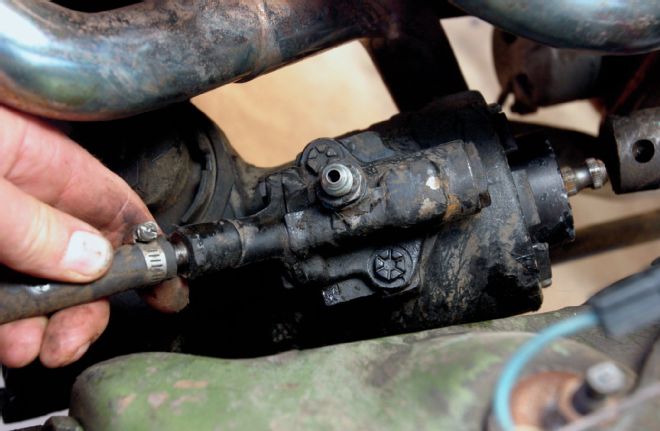
Removing the stock box starts under the hood. Begin by disconnecting the pot coupler by driving out the roll pin, then disconnecting the hoses. Loop a length of 3/8-inch hose from the box’s inlet to outlet fittings to avoid an oily mess.
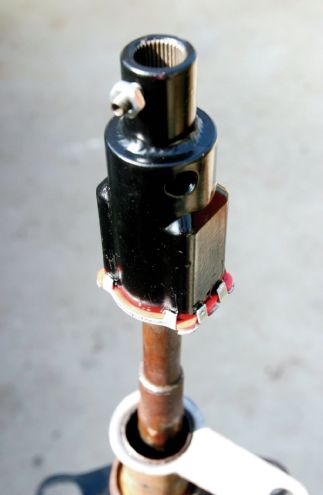
The column needs to be dropped to pull the coupling free from the steering box splines. Since the coupling needs to be replaced, the column will need to come all the way out.
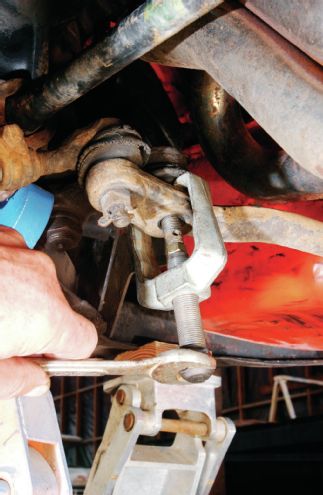
The pitman was disconnected from the centerlink—ours popped free with a puller. Three bolts retain the steering box to the K-member.
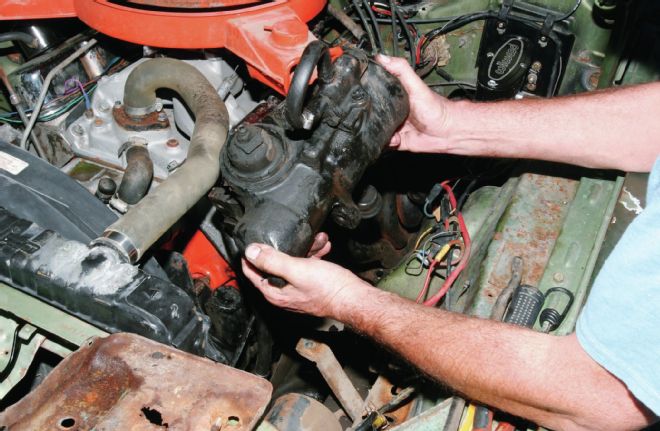
With our small-block B-Body, the steering box was able to come out from the top without removing the headers. We did need to pull the battery tray and jack the engine to gain the required clearance. These factory boxes are immense.
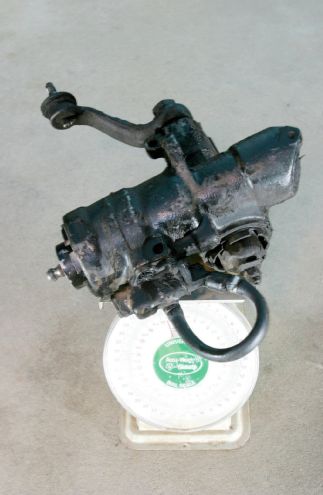
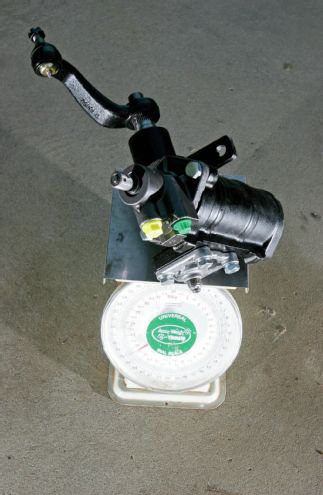
On the scales we found the factory power steering box (left) was 50 percent heavier than the Borgeson box. The new steering gear represents a substantial reduction in dead weight.
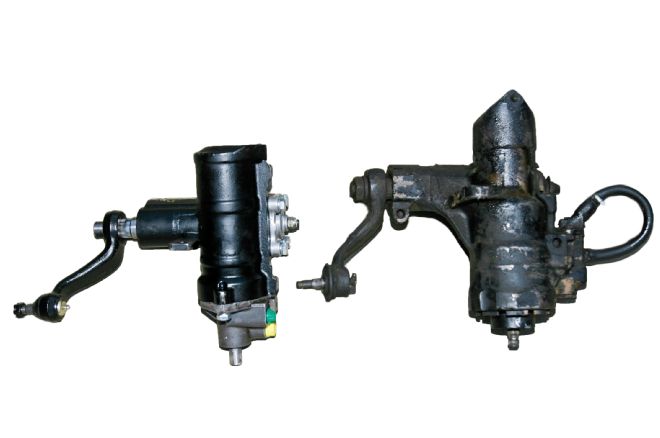
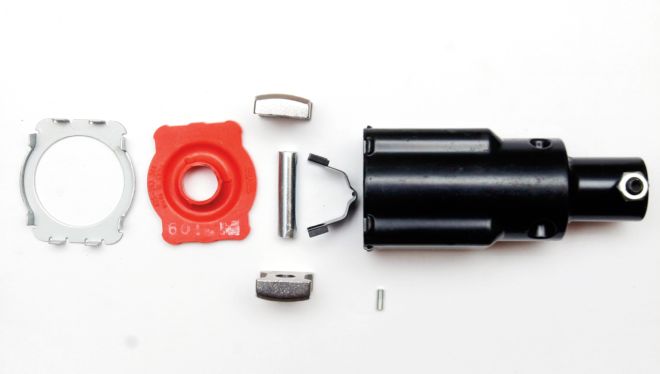
Side by side, the reduction of bulk offered by the Borgeson box (left) is readily apparent. The added clearance is a lifesaver in tight applications, and makes service easier.
The replacement coupler from Bergman is a variation on the OEM pot coupler with the required length and splines to match the box to the column. The kit contains all-new internal parts as well as the seal.

The coupler assembles to the steering shaft just like the stock parts. Be sure not to forget the fail-safe dowel (stop) pin, which prevents the coupling from pulling apart. We marked the full-in and full-out travel of the coupling on the shaft with a Sharpie as a reference for the installed position.
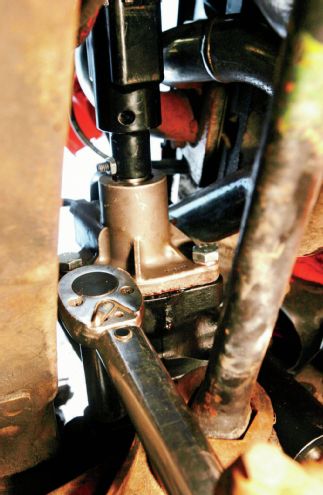
The box installation was a simple bolt-in, going in just like a stock replacement unit. The shaft coupler is retained by a set screw, and the fasteners to the K-frame are torqued to 80 ft-lb. Torque the big pitman nut to the sector shaft with 175 ft-lb.
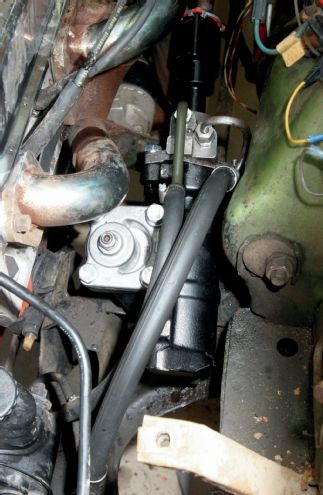
Once in place, the Borgeson box looks tiny compared to the stock unit. The factory hoses from the power steering pump fit perfectly to the supplied adapters. We were impressed with the ease of installation, and even more impressed with the improved steering response.